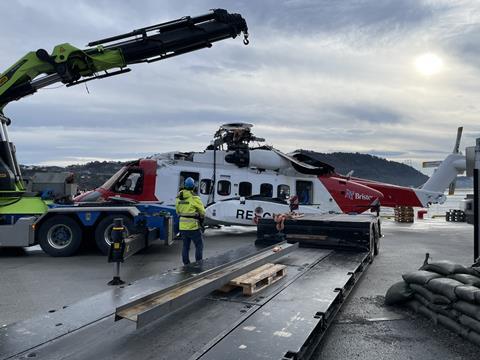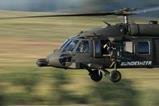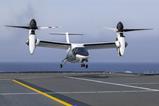Accident investigators say they have so far found no technical faults with the Sikorsky S-92 involved in a fatal accident in Norway in late February although caution that it is too early to draw conclusions.
But data from the helicopter’s flight recorders has been downloaded successfully and analysis is under way, says the Norwegian Safety Investigation Authority (NSIA).

One of the six occupants aboard the search and rescue helicopter (LN-OIJ) died after the heavy-twin came down off the Norwegian coast on 28 February following a night training mission.
Investigators raised the wreckage – located 15nm (28km) to the west of Bergen at a depth of 220m (720ft) – on 1 March and the recorders were subsequently sent to the UK Air Accidents Investigation Branch for downloading.
Cautioning that the “investigation is still at an early stage”, the NSIA says it is “too early to draw any conclusions” about why the S-92 crashed.
However, the NSIA says it “has not observed any technical fault which contributed to the accident”.
“We have downloaded data and it is currently being analysed. We have had interviews with some of the crew from the helicopter,” it adds.
Images of the wreckage released by the NSIA showed substantial damage to the S-92’s main rotor suggesting it was still spinning at the point of impact and the agency confirms this was the case.
“The main rotor has impacted the sea while turning. More on this will be apparent when analysing data,” the NSIA says.
In addition, the pictures showed that the helicopter’s automatic floats had not deployed. However, the agency says it is premature to conclude “that no deployment of the floats is [due to] a technical malfunction”.































